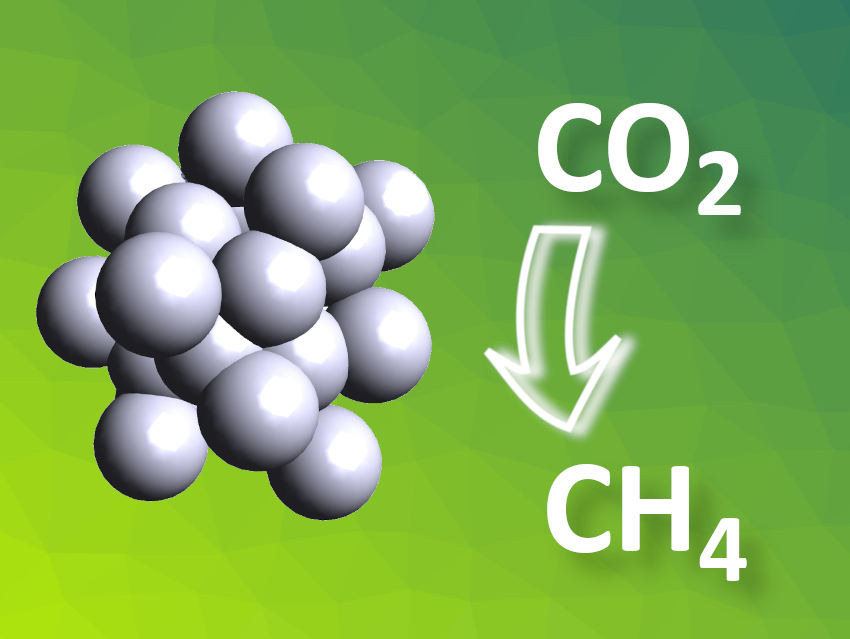Converting the greenhouse gas CO2 into useful chemical compounds could help to alleviate climate change and reduce the dependence on fossil resources. The transformation of CO2 to value-added products such as methane or methanol is one option for this. However, existing catalysts for, e.g., the hydrogenation of CO2 to CH4 often require high pressures and/or temperatures. Photocatalytic processes could be an alternative.
Xu Liu, Jing Ma, Nanjing University, China, Zhong Jin, Nanjing University and Shenzhen Research Institute of Nanjing University, China, and colleagues have found that Ag25-based clusters can catalyze a light-driven CO2 reduction reaction to CH4 with high selectivity at relatively low temperatures. The atomically precise silver clusters were prepared from AgNO3 and 2,4-dimethylbenzenethiol by adding tetraphenylphosphonium bromide and NaBH4. The clusters have an Ag13 core, surrounded by a shell containing six Ag2S3 units.
The team performed a light-driven catalytic CO2 reduction with H2 on the Ag25 clusters (supported on a glass microfiber membrane) under a Xe lamp at 100 °C. They observed high catalytic activity and almost complete selectivity for the formation of methane.
- Photodriven Catalytic Hydrogenation of CO2 to CH4 with Nearly 100% Selectivity over Ag25 Clusters,
Yan Xiong, Hongwei Chen, Yi Hu, Songyuan Yang, Xiaolan Xue, Lingfeng He, Xu Liu, Jing Ma, Zhong Jin,
Nano Lett. 2021.
https://doi.org/10.1021/acs.nanolett.1c02784




